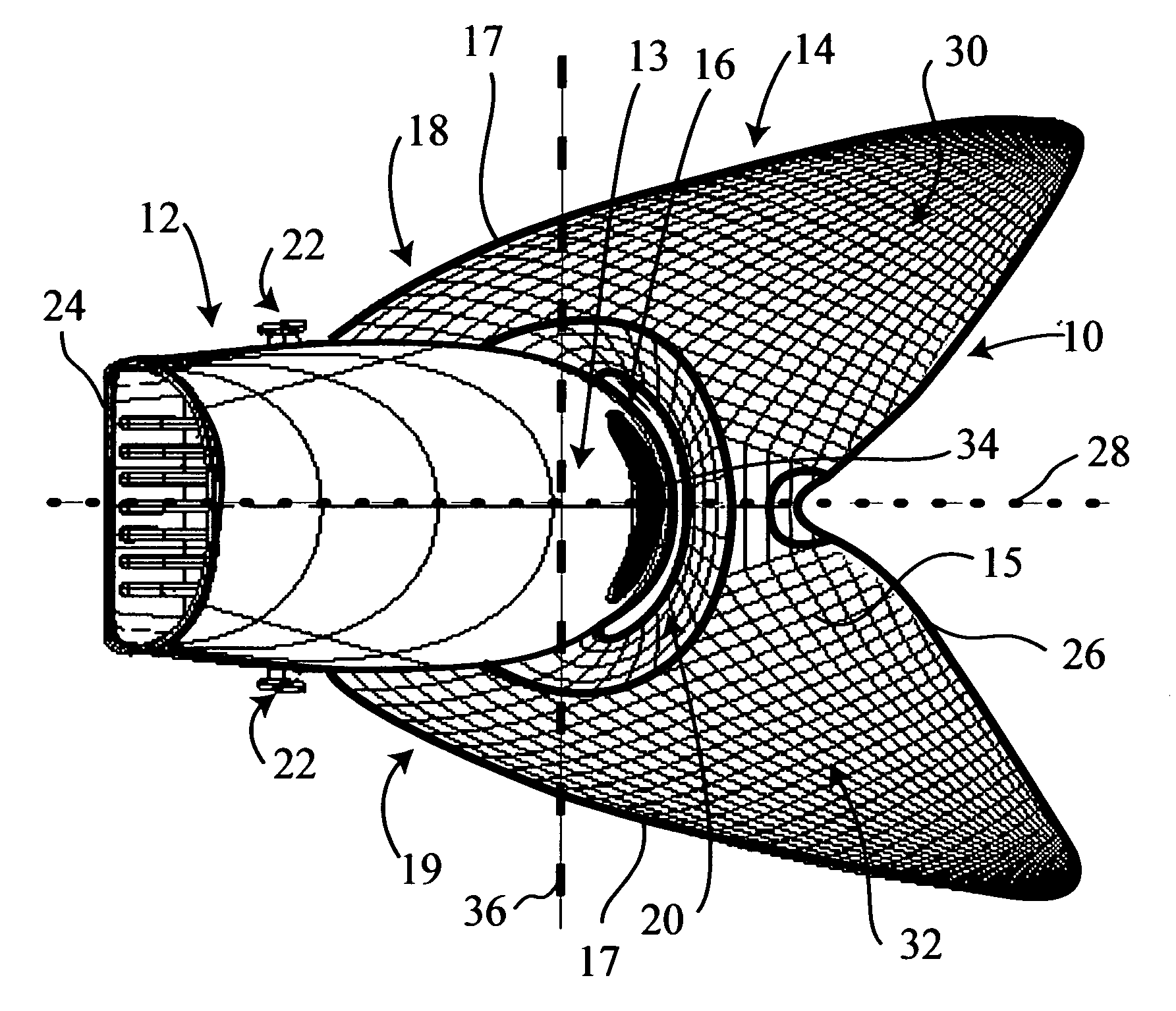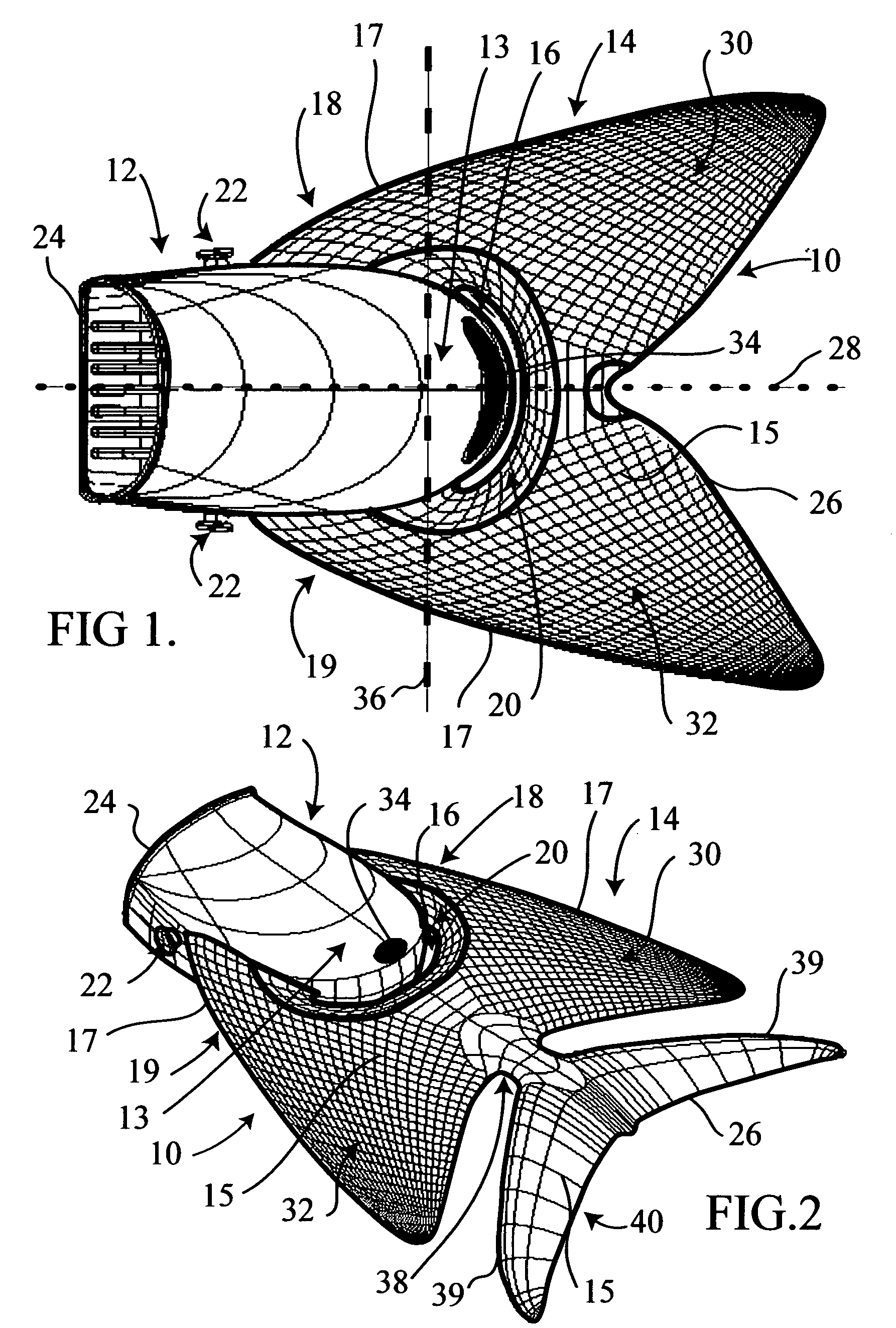Relief jet aperture swim fins with living-hinge blade
- Summary
- Abstract
- Description
- Claims
- Application Information
AI Technical Summary
Benefits of technology
Problems solved by technology
Method used
Image
Examples
Embodiment Construction
[0044]Referring to FIG. 1, a fin 10 is shown according to a preferred embodiment. Each fin 10 comprises a foot pocket 12, a blade 14 with a relief jet aperture 16, a left-side living hinge 18, and a right-side living hinge 19 that are configured to maintain blade 14 in the desired angle of attack for a variety or range of kicking strengths or powers.
[0045]According to a preferred embodiment, foot pocket 12 and blade 14 are integrally molded (e.g., in a single molding operation for improved economics and as well as excellent performance). Alternatively, foot pocket 12 and blade 14 are fused together to form an integral structure. Foot pocket 12 is shown with an open heel and buckle boss 22 for attachment of a conventional set of buckles and heel straps (shown in FIG. 8). Alternatively, foot pocket 12 includes a closed heel instead or any of a variety of conventional designs. Foot pocket 12 is preferably formed of the same material as blade 14 for improved economics as well as great p...
PUM
 Login to View More
Login to View More Abstract
Description
Claims
Application Information
 Login to View More
Login to View More - R&D Engineer
- R&D Manager
- IP Professional
- Industry Leading Data Capabilities
- Powerful AI technology
- Patent DNA Extraction
Browse by: Latest US Patents, China's latest patents, Technical Efficacy Thesaurus, Application Domain, Technology Topic, Popular Technical Reports.
© 2024 PatSnap. All rights reserved.Legal|Privacy policy|Modern Slavery Act Transparency Statement|Sitemap|About US| Contact US: help@patsnap.com










